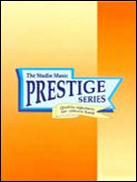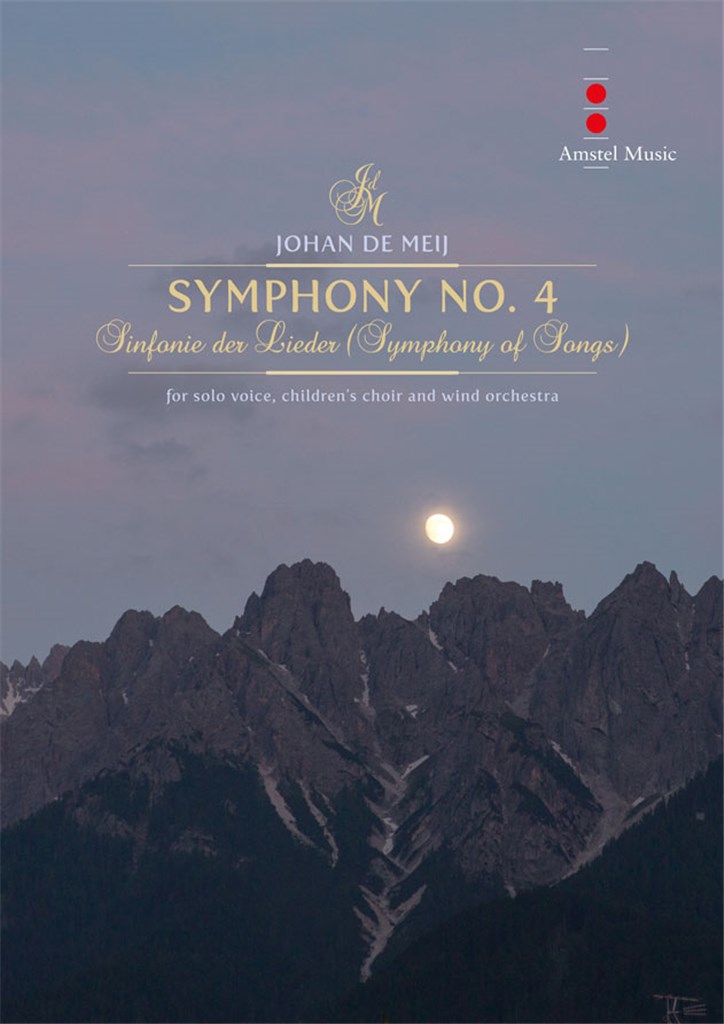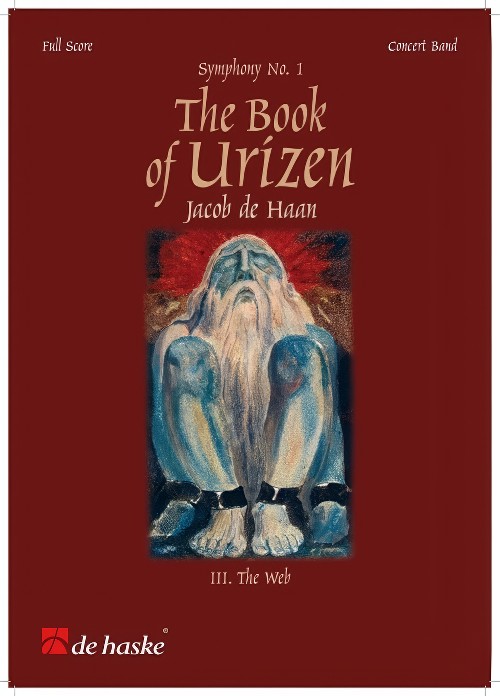Results
-
 £124.95
£124.95SWORD AND THE CROWN, The (Prestige Concert Band - Score and Parts) - Gregson, Edward
In 1988 I was commissioned by the Royal Shakespeare Company to write the music for The Plantagenets trilogy, directed by Adrian Noble in Stratford-upon-Avon. These plays take us from the death of Henry V to the death of Richard III. Later, in 1991, I wrote the music for Henry IV parts 1 and 2, again in Stratford. All of these plays are concerned with the struggle for power (the crown) through the use of force (the sword) and they portray one of the most turbulent periods in the history of the British monarchy.This work quickly became established in the mainstream repertoire and has received performances worldwide as well as five commercial recordings and many broadcasts. In 2002 I was approached by the Parc and Dare Band regarding their summer festival and commissioned to do a version for brass band. This was given its first performance in Treorchy Hall by the combined bands of Black Dyke and Parc and Dare conducted by Nicholas Childs.When the Royal Air Force Music Services commissioned me to write a work especially for their British tour in 1991 I immediately thought of turning to this music and transforming some of it into a three-movement suite for symphonic band.The first movement opens with a brief fanfare for two antiphonal trumpets (off-stage), but this only acts as a preface to a Requiem aeternam (the death of Henry V) before changing mood to the English army on the march to France; this subsides into a French victory march, but the English army music returns in counterpoint. Finally, a brief reminder of the Requiem music leads to the triumphal music for Richard Plantagenet, Duke of York, father of Edward IV and Richard III (the opening fanfare transformed).The second movement takes music from the Welsh Court in Henry IV (part 1) which is tranquil in mood; distant fanfares foreboding battles to come are heard, but the folktune is heard three times in different variations and the movement ends as it began with alto flute and gentle percussion.The final movement starts with two sets of antiphonally placed timpani, drums and tam-tam, portraying the 'war machine' and savagery of battle. Trumpet fanfares and horn calls herald an heroic battle theme which, by the end of the movement, transforms itself into a triumphant hymn for Henry IV's defeat of the rebellious forces.- Edward GregsonPerformance time 13'54"Recorded on QPRM117D FESTIVAL OF MUSIC 1991, Massed Bands of the Royal Air ForceRecorded on QPRM120D THE SWORD AND THE CROWN, Central Band of the Royal Air Force'Finale' recorded on QPRM142D FESTIVAL OF MUSIC 2002, Massed Bands of the Royal Air Force)
Estimated dispatch 7-14 working days
-
 £94.99
£94.99Last Spring (Concert Band - Score and Parts) - Grieg, Edvard - Takahashi, Tohru
In 1880, Edvard Grieg composed twelve song poems by Aasmund Olavsson Vinje. He arranged two of these songs for String Orchestra published under the title of Two Elegiac Melodies, Op. 34. These two deeply melancholy pieces were titled The Wounded Heart and Last Spring. The latter of these two titles inspired Tohru Takahashi to produce this expressive and sensitive transcription for Concert Band, which will make a fantastic encore piece for any concert.
Estimated dispatch 7-14 working days
-
 £37.95
£37.95PLAIN MAN'S HAMMER, A (Novello Symphonic Band) Extra Score - Dalby, Martin
Extra Score only. The whole shape of A Plain Man's Hammer owes something to classical sonata form. It is a two part form of which the first is an exposition containing two tonally contrasted subjects and the second contains a development section where harmonies move rapidly towards a recapitulation of the two original subjects, this time the contrast being reconciled in the home key. The first large section of A Plain Man's Hammer is an exposition containing two main ideas and other material associated with them. Development is replaced by a parade of incomplete parodies: a waltz almost in the style of Chopin; a sort of Tango; a Mahlerian march; something close to Janacek; a cheap imitation of a Flamenco; a corruption of Oranges and Lemons; a pop song; a military march which gets somewhat out of hand; a Viennese Waltz to set your feet tripping, and an even cheaper imitation of a Flamenco. At the end of the work the associated material of the opening reappears in maturity; the major ideas play a subservient role, reappearing only in the final coda. Duration: 14 mins.
Estimated dispatch 7-14 working days
-
 £189.95
£189.95PLAIN MAN'S HAMMER, A (Novello Symphonic) - Dalby, Martin
Score & Parts. The whole shape of A Plain Man's Hammer owes something to classical sonata form. It is a two part form of which the first is an exposition containing two tonally contrasted subjects and the second contains a development section where harmonies move rapidly towards a recapitulation of the two original subjects, this time the contrast being reconciled in the home key. The first large section of A Plain Man's Hammer is an exposition containing two main ideas and other material associated with them. Development is replaced by a parade of incomplete parodies: a waltz almost in the style of Chopin; a sort of Tango; a Mahlerian march; something close to Janacek; a cheap imitation of a Flamenco; a corruption of Oranges and Lemons; a pop song; a military march which gets somewhat out of hand; a Viennese Waltz to set your feet tripping, and an even cheaper imitation of a Flamenco. At the end of the work the associated material of the opening reappears in maturity; the major ideas play a subservient role, reappearing only in the final coda. Duration: 14 mins.
Estimated dispatch 7-14 working days
-
 £94.99
£94.99Last Spring
In 1880, Edvard Grieg composed twelve song poems by Aasmund Olavsson Vinje. He arranged two of these songs for String Orchestra published under the title of Two Elegiac Melodies, Op. 34. These two deeply meloncholy pieces were titled The Wounded Heart and Last Spring. The latter of these two titles inspired Tohru Takahashi to produce this expressive and sensitive transcription for Concert Band, which will make a fantastic encore piece for any concert.
Estimated dispatch 7-14 working days
-
 £94.99
£94.99Last Spring - Edvard Grieg
In 1880, Edvard Grieg composed twelve song poems by Aasmund Olavsson Vinje. He arranged two of these songs for String Orchestra published under the title of Two Elegiac Melodies, Op. 34. These two deeply meloncholy pieces were titled The Wounded Heart and Last Spring. The latter of these two titles inspired Tohru Takahashi to produce this expressive and sensitive transcription for Concert Band, which will make a fantastic encore piece for any concert.
Estimated dispatch 7-14 working days
-
 £134.99
£134.99Cleopatra (Concert Band - Score and Parts) - Deleruyelle, Thierry
The Last Queen of Egypt. Queen Cleopatra ruled Egypt for over 20 years. She is one of antiquity's best-known women, in particular because of her relationships with Julius Caesar and, above all, Mark-Anthony, but also because the cause of her death remains a mystery. The work is split into three parts and performed without breaks. The first section begins with a bright introduction representing Mark-Anthony. Dynamic in nature and reminiscent of military music, this characterises the Roman general. But soon after, another theme emerges, softer and more melodic, symbolising Cleopatra's femininity. The two characters then combine on a faster tempo. The middle section of the work depicts the love that Mark-Anthony and Cleopatra feel for each other. This passionate relationship lasted ten years and produced three children. This is expressed by a warm and intense theme, just like the beauty of the Egyptian queen. The third and last section opens in a determined and military mood. Mark-Anthony and Cleopatra were often apart, the Roman general was often away on a campaign. They met up in Alexandria to celebrate their triumph. But, as the targets of the jealousy and ambition of Octavius, Julius Caesar's son, the lovers are trapped and await the inevitable conquest of Egypt by the Romans. When Mark-Anthony heard the false news that Cleopatra had committed suicide, he ended his own life. The Queen of Egypt, for her part, was imprisoned shortly afterwards. The two lovers remain one of History's most famous couples. This piece was commissioned by the Wind Orchestra of the town of Antony, near Paris, directed by Philippe Rossignol, to mark its 90th anniversary. Duration: 10.00
Estimated dispatch 7-14 working days
-
 £1.95
£1.95Symphony No.4: Symphony of Songs (SATB Choral Octavo) - De Meij, Johan
Johan de Meij's 4th Symphony for solo voice, children's choir and wind orchestra is inspired by a variety of 19th century German poems.The first three movements use lyrics from the same source as Gustav Mahler did earlier: Kindertotenlieder by Friedrich Ruckert.:Ein Jahr ist nun geschwundenWenn zur Thur hereinWiedersehnThe second half of the symphony continues on the death theme, using a poem by Heinrich Heine (Two Brothers). The last two songs, Early Spring and Song of the Harlequin by Hugo von Hofmannsthal are a metaphor for rebirth, new life and hopeZwei Bruder (Heinrich Heine)Vorfruhling (Hugo von Hofmannsthal)Liedchen des Harlekin (Hugo von Hofmannsthal)Duration: 30:00
Estimated dispatch 7-14 working days
-
 £340.00
£340.00Symphony No.4: Symphony of Songs (Solo Voice, Children's Choir and Concert Band - Score and Parts) - De Meij, Johan
Johan de Meij's 4th Symphony for solo voice, children's choir and wind orchestra is inspired by a variety of 19th century German poems.The first three movements use lyrics from the same source as Gustav Mahler did earlier: Kindertotenlieder by Friedrich Ruckert.:Ein Jahr ist nun geschwundenWenn zur Thur hereinWiedersehnThe second half of the symphony continues on the death theme, using a poem by Heinrich Heine (Two Brothers). The last two songs, Early Spring and Song of the Harlequin by Hugo von Hofmannsthal are a metaphor for rebirth, new life and hopeZwei Bruder (Heinrich Heine)Vorfruhling (Hugo von Hofmannsthal)Liedchen des Harlekin (Hugo von Hofmannsthal)Duration: 30:00
Estimated dispatch 7-14 working days
-
 £244.99
£244.99The Book of Urizen (Movement III: The Web) (Soprano, Narrator and Concert Band - Score and Parts) - De Haan, Jacob
The Book of Urizen is a work for concert band, solo soprano, and a male narrator in which sound collages of religious expressions are used. The piece is inspired by the compelling visionary poem of the same name (which the poet illustrated himself) by the Englishman William Blake (1757-1827), who occupies a unique position in western literature and the visual arts. He was not just a poet and a writer, but he was also a graphic artist, a painter, an illustrator, a spiritualist, a religious visionary, and a mystic philosopher. For the performance of this work, a professional sound system, including two microphones and a CD player, is needed. The three sound collages are three separate tracks on the enclosed CD and can be played easily at the right moment.The Book of Urizen bears resemblance to Genesis and Exodus, of which the contents form the basis of the Christian, Jewish, and Islamic faith. Blake adhered to the principle that all religions are in fact one, and that deities reside in human beings. In The Book of Urizen this is represented in "The Net of Religion," which is spanned over the earth by Urizen. The sound collages, compiled by Jacob de Haan in the studio, find their origin in Jerusalem, the Holy City, where the afore-mentioned faiths come together.The first two movements, The Vision and The Creation, are available in a separate set.
Estimated dispatch 7-14 working days
